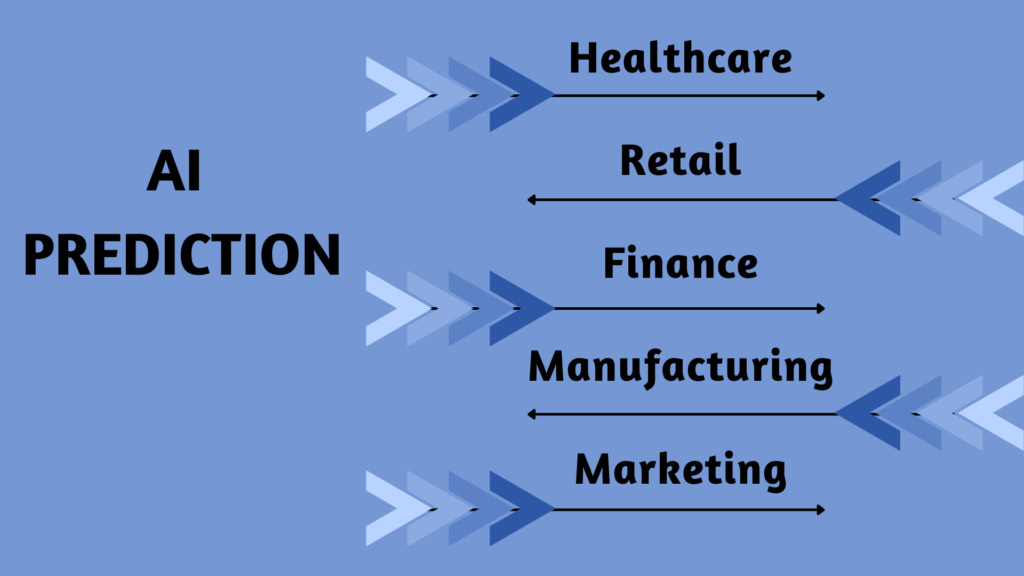In today’s dynamic business landscape, maintaining a competitive edge necessitates a keen aptitude for foreseeing market trends, understanding customer behavior, and identifying potential risks. This is precisely where the significance of Artificial Intelligence Predictive Analytics becomes apparent. Through the utilization of AI predictive modeling, organizations can secure a strategic advantage, make well-informed choices, and propel their growth initiatives. In this thorough examination of the topic, we will explore AI predictive modeling, dig into the prominent entities in the domain of AI Predictive Companies, analyze the indispensable AI Data Analytics Tools, and monitor the concept through real-world AI Prediction examples.
AI predictive modeling represents the convergence of artificial intelligence and data analytics, where it directs advanced algorithms and machine learning methodologies to monitor historical data, discern underlying patterns, and offer forecasts pertaining to forthcoming events or results. Essentially, its central objective revolves around the transformation of data into actionable insights. At its core, AI predictive modeling strives to unearth valuable insights concealed within extensive datasets, thereby enabling organizations to proactively make decisions, mitigate potential risks, and capitalize on emerging opportunities. Whether it’s predicting customer churn, optimizing supply chain operations, or enhancing marketing strategies, AI predictive modeling is a game-changer.
AI Predictive Analytics Companies
To truly utilize the power of AI predictive analytics, companies often turn to specialized experts in the field. These AI Predictive Companies dedicate their resources to developing cutting-edge predictive models, helping businesses across various industries make sense of their data.
One notable player in this space is Palantir Technologies. Palantir’s platform empowers organizations to seamlessly incorporate, oversee, and extract valuable insights from their data. With a particular emphasis on predictive analytics, Palantir assists enterprises in making well-informed decisions by exploiting both historical data and up-to-the-minute information.
In the context of AI, SAS is considered a significant and influential participant in the industry. SAS provides a wide array of AI and analytics solutions that push the boundaries of predictive modeling to new heights. SAS provides powerful AI tools that help organizations make accurate predictions and data-driven decisions. These tools can analyze large amounts of data, find patterns, and make forecasts that were once hard to achieve with traditional methods.
Overall, companies are pushing AI innovation to help businesses and institutions fully use AI for predictive modeling and data analysis.
AI Data Analytics Tools
For businesses aiming to adopt AI predictive modeling, having the right AI Data Analytics Tools is crucial. These tools offer the essential framework and functionalities required for the efficient collection, storage, processing, and analysis of data.
Python and R are widely acclaimed programming languages known for their effectiveness in building predictive models. Scikit-learn and TensorFlow utilize AI algorithms provided by the selection of libraries and frameworks from these languages.
BigML is a cloud-based machine learning platform that streamlines the creation of predictive models, offering a user-friendly method for developing models. Its user-friendly interface allows businesses to create models without extensive technical expertise.
Here are some essential tools that facilitate AI predictive analytics:
Tableau:
Tableau enhances AI predictive analytics by creating interactive dashboards and reports, making complex data more accessible and understandable.
Amazon SageMaker:
Amazon’s SageMaker stands as a comprehensive platform designed for the creation, training, and deployment of machine learning models. Its seamless integration with other Amazon Web Services (AWS), renders it well-suited for extensive AI projects.
Google Cloud AI:
Google Cloud AI offers tools like AutoML, enabling businesses to create tailored predictive models with minimal manual intervention.

These tools empower organizations to delve into their data, construct predictive models, and extract actionable insights from their datasets. Simultaneously, they lower the barriers to entry for the adoption of AI.
AI Prediction Examples

To illustrate the tangible benefits of AI predictive modeling, let’s explore some compelling AI Prediction examples from various industries:
AI Predictive Analytics in healthcare can save lives. Hospitals and healthcare professionals employ AI models for forecasting patient outcomes, identifying individuals at high risk, and enhancing treatment strategies. As an illustration, the University of California, San Francisco (UCSF), created an AI model capable of forecasting patient deterioration hours ahead of time, enabling healthcare personnel to take timely action.
In the field of retail, retailers employ predictive analytics to enhance customer experiences and optimize inventory management. Amazon, a pioneer in this field, uses AI to forecast customer demand accurately, ensuring products are available when needed and minimizing overstock.
In the finance sector, financial institutions use AI predictive models to detect fraudulent activities. Companies like PayPal leverage machine learning algorithms to analyze transaction data in real-time, identifying suspicious patterns and preventing fraud before it occurs.
In Manufacturing, manufacturers benefit from predictive maintenance, which reduces downtime and lowers maintenance costs. General Electric (GE) uses AI predictive analytics to monitor the performance of industrial machines and predict when maintenance is required, avoiding unplanned disruptions.
In the world of marketing, AI predictive models help businesses target their audience more effectively. Netflix, for instance, uses AI to recommend personalized content to its subscribers, increasing user engagement and retention.
These examples showcase the versatility of AI predictive analytics across industries. They not only improve decision-making but also drive efficiency and innovation, ultimately leading to business growth.
Road Ahead
As the digital landscape continues to evolve, businesses that embrace Artificial Intelligence Predictive Analytics gain a substantial advantage. The ability to foresee trends, make data-driven decisions, and adapt quickly to changing circumstances is invaluable. AI predictive modeling, coupled with the expertise of leading AI Predictive Companies and the right AI Data Analytics Tools, empowers organizations to thrive in today’s competitive environment.
To make use of the full potential of AI predictive analytics, businesses should embark on a journey of continuous learning and adaptation. They should invest in building data-driven cultures, where AI is seamlessly integrated into everyday operations. By doing so, organizations can unlock new opportunities, mitigate risks, and chart a path toward sustained success in an ever-evolving marketplace.
In conclusion, AI predictive analytics is not just a technological innovation; it’s a strategic imperative for modern businesses. It’s the key to unlocking the hidden potential within data, making informed decisions, and ultimately achieving growth and success. As AI continues to advance, companies that harness its predictive power will undoubtedly lead the way into a brighter, data-driven future.


One Response